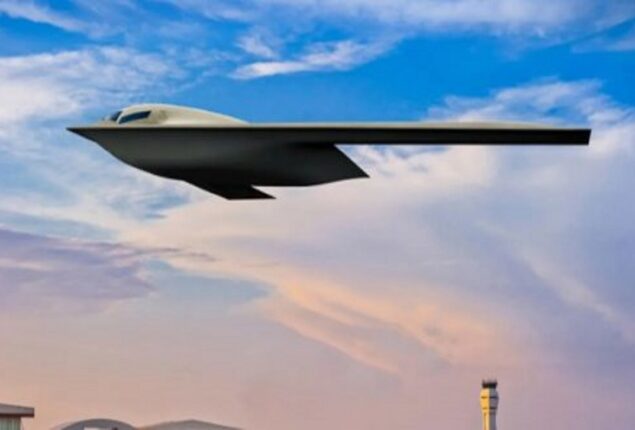Australia’s PM opposes releasing a Bali bomber who killed 202 people
Umar Patek was sentenced to 20 years in 2012 for his role...

The Air Force unveils a new stealth bomber after more than 30 years. The B-21 Raider will debut Friday.
The next-generation stealthy long-range strategic bomber is meant to replace the aging B-1 Lancer and B-2 Spirit.
The B-21 came in on schedule and within the $25.1bn budget, the US Air Force set in 2010. Northrop Grumman looks to have learned from the F-35 and B-2 bomber programs.
34-year-old B-2 Spirit was revolutionary. The aircraft’s sophisticated materials and design made it nearly “invisible” to radar due to its small radar signature.
This allowed the aircraft to execute long-range strike missions in heavily-defended locations with a decent chance of survival, something the B-1 and B-52 would have trouble doing.
The B-2 may destroy high-value targets in enemy territory without warning.
Northrop Grumman has provided a few facts regarding the project, but some have leaked in stories.
The B-21 Raider borrows from its predecessor’s ideas, including the flying wing concept with embedded engines to decrease radar signature.
The B-1’s payload (ordnance, bombs, and missiles) is almost half.
It flies at high subsonic speeds and is not as fast as the B-2 stealth bomber in 1988.
Both to buy and maintain, it’s cheaper. The B-2 was quite expensive to maintain, but the B-21 will cost much less. Cheaper planes sell more. One hundred planes are planned for manufacturing, although that number could rise if costs are kept low.
Stealth is a major B-21 quality, but not its sole one. The Air Force and US military are building a formidable, distributed network of long-range sensors and strike platforms that broadcast and exchange adversary data.
The B-21 fits neatly into this new strategy network, ready to gather intelligence and strike. It can acquire and send information to friendly aircraft, satellites, radars, and more and destroy objects within its range.
B-21 bomber’s primary duty is long-range strikes, but it can acquire and exchange intelligence to control its own fleet of missiles, which can destroy several targets. In short, its “brain” is its most significant asset, and open-source software will allow the aircraft to be easily modified, extending its useful life.
The aircraft may be flown manned or unmanned, and its internal armament bays can carry stealth missiles like the JASSM as well as conventional and nuclear payloads.
These are essential for the plane’s survival. Quantum radar could identify stealth planes, according to reports. Western scientists dispute China’s claim that its radar can detect stealth planes.
Given the military uses, this is a hot topic. With a working quantum radar, US stealth aircraft would lose their substantial advantages overnight. Unseen, invulnerable planes could be shot down.
Even without stealth, the B-21’s other features make it dangerous. It can absorb information faster than its adversaries, so it will know where the enemy and its own assets are. It fits into a large structure of deadly platforms that can destroy targets from far away.
The B-21’s ability to receive, absorb, and digest huge amounts of data, and its latest and most sophisticated sensors, will make the Raider a powerful weapon.
The B-21’s deployment on Friday implies years of development, modifying, polishing, and fine-tuning as the bomber undergoes regular ground and air tests.
It is already one of the weapons any potential adversary will fear most because it would arrive deep within an enemy’s air space with little to no warning. Any near competitor considering military action will consider this deterrence factor.
China has ramped up research on its own stealth bomber, the Xian H-20. B-21 Raider has rivals.
Catch all the World News, Breaking News Event and Latest News Updates on The BOL News
Download The BOL News App to get the Daily News Update & Follow us on Google News.